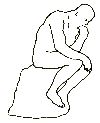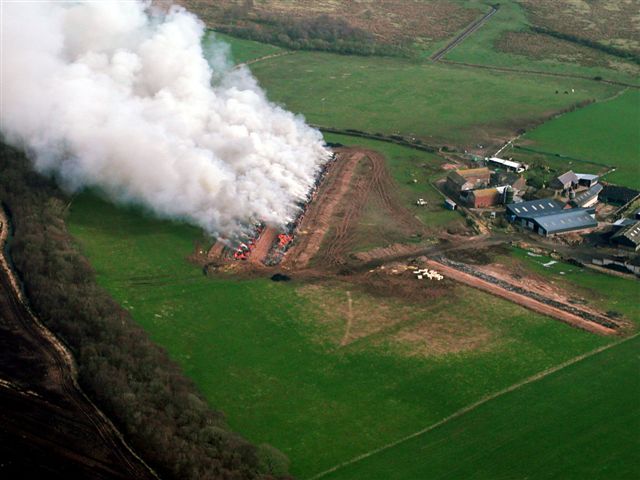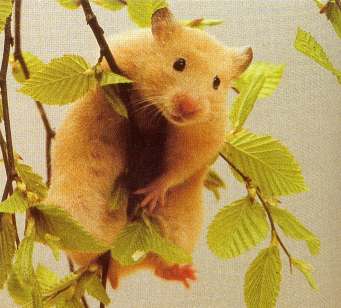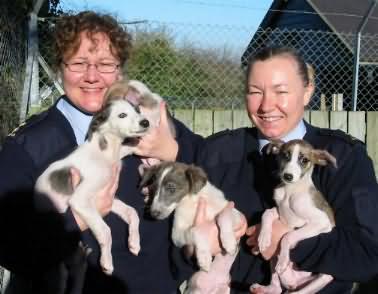
IEP 426: Contested Natures
AWAYMAVE - The Distance Mode of MA in Values and the Environment at Lancaster University
Week 4. Animals, Technology and Nature
| Tutor Details | Biblio | Assessment | Resources | discussion |
 Exercise
Exercise
How do we understand ethical and societal controversies over animals in
contemporary society?
Are we paradoxical in our use of animals, treating them with empathy in certain situations (as pets, for example) and instrumentally in others (as meat, for example)?
Under what conditions can we develop a more mature public debate over animals in such domains as farming, animal testing, and biotechnology?
What role can social science play in anticipating public controversy and thus in contributing to better governance?
Why do people feel so concerned about genetically modified animals and to what extent are their concerns legitimate?
As with previous weeks do jot down your initial responses to these questions and send any that you would like to share to the discussion site.
A Historical Context
Undoubtedly, the relationship between humans and animals has undergone a profound set of transformations as we enter the twenty-first century. In the early part of the twentieth century these still tended to be based on a categorical distinction between humans and animals. Indeed, since at least the industrial revolution, animals figured in the modern project principally as a resource for human progress (Franklin 1999). At the close of that century that distinction, and its reliance on the subordination of animals, is being seriously questioned. The historian Keith Thomas has identified what he describes as a historically generated paradox (1985). Just as the logic of industrial society has resulted in the increasingly systematic instrumental use of animals for human betterment (in multiple ways), so that same society has also generated new forms of empathy towards and identification with animals.
Indeed, most of us appear to be caught up in a complex web of contradictory responses in daily life, identifying with animals and frequently treating them with feeling and compassion (for example, as pets), while also benefiting from a diversity of instrumental uses (for example, as meat, as clothes, and as ‘surrogate humans’ in animal testing). Public opinion research also shows considerable numbers of people uncomfortable and doubtful about contemporary uses of animals, particularly in agricultural practices, in laboratories, and in field sports.
The Divide between Moral and Instrumental Viewpoints
These responses were reflected in public focus group research carried out at Lancaster University (see Macnaghten 2003). In the groups we found people caught between moral and instrumental viewpoints, both seeing animals as ‘ends in themselves’, and participating in daily practices that ‘indirectly’ use animals more instrumentally, as a means to satisfy ‘human ends’. Thus, on the one hand, we found evidence that large numbers of people were experiencing and relating to animals as individual, living, sentient beings. People were developing what can be described as a ‘culture of care and responsibility’ towards animals, expressed through the establishment of strong emotional ties, feelings of reciprocal love and respect, time spent in the company of animals, and a desire to enable animals to live a life as happy, as healthy and as free from suffering as possible. Such sentiments were unsurprisingly most prevalent amongst ‘pet owners’ but were shared across a variety of different social groups. For example, some farmers spoke in emotive terms about their livestock, wildlife enthusiasts spoke of the moral imperative of protecting and respecting animals in their natural habitat, while country sports enthusiasts spoke passionately of their intimate relationships with their working dogs. Of course, what constitutes ‘care and responsibility for animals’ is hugely contested; what constitutes ‘care and respect’ for one social group may be alternatively represented as ‘cruel and inhumane’ by another. Indeed, such contested notions of animal-human relations are reflected in the growth of vegetarianism, the rise of animal welfare and animal rights organisations, the popularity of protests over the live exports of animals, and so on. Nevertheless, not withstanding such differences in definition and approach, across a wide variety of contexts we can see a growth of empathy and compassion with animals.
At the same time, the (non-farming) focus group discussions also pointed to a collective ‘blanking out’ of those aspects of daily life that remain utterly dependent upon the instrumental use of animals, especially in the use of animals in meat production (see Franklin 1999: 153-157 for a historical analysis of the ‘progressive distancing’ of animal origins in the retailing and consumption of meat). Many people saw themselves as being ‘in denial’, choosing to eat meat yet at the same time distancing themselves from actively confronting the realities of modern farming; colluding with abattoirs, supermarkets, advertisers and food producers in dislocating meat from its corporeal production:
Male 1 I suppose I could say I don’t care about
cows, pigs and sheep because I eat them.
Female 1 But do you like them in the fields?
Male 1 I like to see them in the fields but I mustn’t care about
them because I eat them everyday.
Male 2 You don’t want to see cruelty or…
Female 2 We’re hypocrites really.
Female 3 Yes, we are.
Male 1 We’re selective when we want to be.
Female 2 When it suits us.
Female 3 When you’re at the supermarket you don’t think about
it.
Male 3 You must be able to switch off, it goes back to that point about
caring doesn’t it. You like them in the field but…
Female 2 Yeah, you all go and say look at the bunnies in the field but
I like rabbit pie.
(Wildlife observers – North-West)
Yet, the very acknowledgment of ‘hypocrisy’ and ‘selection’ commonly expressed by participants represents what may be seen as a reflexive break from the past, or what sociologists refer to as an instance of ‘reflexive modernisation’ or ‘detraditionalisation’ (Beck et al. 1995; Heelas et al. 1996). In previous times people were more likely to regard the eating of meat as a given, as part of the unspoken norms of traditional life (Fiddes 1991). Nowadays, traditions and practices have to explain themselves, to become open to interrogation or discourse (Giddens 1994). In negative terms, the active dislocation of meat from its context of production may be viewed as part of the contemporary feeling of powerlessness, of intensive farming regimes seen as governed by the ineluctable logic of global markets and (post)fordist work practices (Griffiths and Wallace 1998; Schlosser 2001). In a more positive light, the reflexive engagement with such acts of separation belies a latent desire to work out a moral and ethical way of living together, both animals and humans (Franklin 1999).
The question of ‘animal testing’ raised similar ambivalent responses as people appeared to be caught between contradictory instrumental and moral/caring viewpoints, between the view as to what was an appropriate use for human betterment pitted against one’s moral distaste for subjecting animals to pain. Indeed, such ambivalent caring/instrumental responses can even apply to the same animal, when people accepted the conditional need to use animals for testing that elsewhere would be regarded as pets or wildlife. Again, the preferred option was to ‘switch-off’. However, when respondents confronted the issue a number of common conditions emerged. Significantly, people tended to accept (or at least to tolerate) the suffering of the animals concerned when there existed a genuine and authentic human need, typically expressed in the need to cure life-threatening diseases. Significantly, such a need had to be justified in human rather than commercial criteria and was only seen as justified when alternatives were not available.
Below are some complementary facts and figures on how we think and use animals in the UK.
1. Animal Experimentation
Home Office Figures show that in 1998 2.57 Million animal experiment procedures were performed
According to species, the number of procedures performed was: mice1.64
million; rats 567,000; fish 122,000; birds 106,000; guinea pigs 62,000;
rabbits 41,400; sheep 36,000; reptiles/amphibians 14,500; pigs 11,700;
hamsters 10,600; dogs 8,200; gerbils 6,200; primates (monkeys) 4,000;
cats 1,600; ferrets 1,200
(source: Home Office ‘Statistics of Scientific Procedures on Living
Animals, 1999)
Public Opinion On Animals Experimentation
MORI conducted a quantitative survey study in 2000 on behalf of the Medical Research Council (MRC) into ‘Animals in Science and Medicine’. Key findings were:
The phrase ‘animals in research and medicine’ was spontaneously associated by respondents with:
- animal suffering or cruelty 33%
- medical research 12%
- cures for cancer or AIDS 5%
Most people endorsed animal experimentation for ‘medical purposes’:
| Always Justifed | Sometimes | Never | |
| Research into life- threatening diseases |
42% | 35% | 19% |
| Testing potential new medicines |
21% | 45% | 30% |
| Researching animal diseases | 31% | 48% | 31% |
| Improving livestock welfare | 24% | 43% | 27% |
| Improving livestock e.g. | |||
| woollier sheep, leaner meat | 4% | 17% | 73% |
| Testing chemical used in the workplace |
8% | 25% | 61% |
| Testing safety of household products |
4% | 15% | 77% |
| Testing safety of cosmetics | 4% | 9% | 85% |
2 Animals & Farming in the UK
In 2000, the Ministry for Agriculture, Fisheries and Food (MAFF) published a report detailing the state and scope of agriculture in the UK. Some of the main findings, regarding the use of animals in farming, were as follows:
Total cattle numbers 11,133,000
Total sheep 42,261,000
Total pigs 6,482,000
Total fowl 155,000,000
Public Opinion about Farming and Animals
In a recent survey study (2001) by the Food Standards Agency (FSA):
- 90% of UK adults eat fresh meat on a regular basis
- 69% are concerned about the safety of raw meat.
In a recent NOP (March 2001) poll:
- 82% of UK adults said they would like to a see return to more traditional methods of farming, even if this meant paying more for food.
According to a Taylor Nelson Paul survey for the RSPCA (June 2000):
- 25% said animal welfare was their number one priority when choosing fresh meat
- 80% said they would like to see better welfare conditions for Britain’s farm animals
According to an ICM poll for the Daily Telegraph (April 2001):
- 9% of UK adults ‘don’t eat meat’
According to an NOP Poll for the National Consumer Council (March 2001), as a result of the foot and mouth outbreak:
- 29% are considering (or have stopped) eating meat
- 35% are considering (or have stopped) eating red meat

Foot an Mouth pyre at a farm in Kirkbride.
Picture by Simon Ledingham from the website www.visitcumbria.com/
footandmouth.htm
3 Animal Welfare and Animal Cruelty in the UK
Facts and Figures
In Britain today :

Over half of households have a pet
there are about 7.2 million cats
there are about 6.5 million dogs
there are about 1.2 million rabbits
there are about 0.9 million hamsters
there are about 135 million ornamental fish
8% of UK adults are paid-up members of an animal welfare
organisation
However:
- someone calls the RSPCA’s animal cruelty helpline every 19 seconds
- in 2000, the RSPCA investigated 126,000 complaints and answered a total of 1.5 million calls
- Prosecutions for harm to animals rose by 17.5% from 1999 to 2000
- In 1991, over 129,000 exotic birds were imported into the UK – over 19,000 of these died within a few weeks
- In 1995, the RSPCA estimated that about 1,000 dogs are needlessly destroyed each day (by animal welfare organisations, vets, the police and local authorities)
- It is estimated that there are around half a million stray and unwanted dogs on Britain’s streets
- in 1995, the RSPCA alone destroyed nearly 15,000 dogs, 20,000 cats and 36,000 other animals
 Puppies at an RSPCA rehoming centre
Puppies at an RSPCA rehoming centre

Think
How do you think about animals?
Do you tend to think about them in human/ moral terms or in more instrumental terms?
Do you acknowledge you own contradictions? How? Is it possible or practical to seek to resolve them?
Public Concerns about Genetically Modified Animals

In the focus group discussions people were asked to respond to the prospect
of genetically modified animals. Following consultation with the AEBC
the concept was introduced by reading out a carefully prepared text presented
on a large concept board accompanied by a range of (neutral) images of
animals and genetic modification. The text ran as follows:
We now possess the skills to alter the genetic make-up of animals. By altering the genetic material it is anticipated that we can modify the characteristics of animals in very precise ways. The process involves transfering a gene, commonly a human gene, from one animal species into another. Animals altered in this way are called transgenic. Through this kind of process it is possible to produce transgenic animals designed to manufacture pharmaceuticals, organs for xenotransplantation, animal models for research, and other transgenic animals.
Possible future applications of genetic modification of animals include:
Cows that produce milk with lower cholesterol and enhanced
nutrients
Faster growing farm animals and faster growing fish
Farm animals with reduced sentience to make them less distressed by farm
conditions
Cats that do not cause human allergies
Cats that have their hunting instinct reduced/removed
Mosquitoes that cannot transmit parasitic diseases such as malaria which
are breed to replace, at least locally, wild populations
Sheep or cows that make pharmaceutical products in their milk
Pigs that are breed to produce organs, such as hearts, that can be xenotransplanted
into human.
Even though the concept board had been carefully drafted to be even-handed and impartial, the dominant response in all groups was negative. For some respondents the response was visceral: ‘I don’t like any of that’, one person stated; ‘No, I don’t like any of that at all’, another agreed. Others called the potential applications ‘scary’, ‘wrong’, ‘interfering’ and ‘ridiculous’. However, the one term used to characterise people’s sense of unease was that such applications marked a radical departure from nature:
Female 1 It’s just taking away nature, isn’t
it?
Female 2 Mmm, it’s not natural.
Female 1 None of it’s natural, no.
(Non-animals group – North-West)
Female 1 I think that’s going a bit too far.
Female 1 It’s just not letting nature take its course; it’s
just interfering with nature too much.
(Non-animals group – London)
Female It’s not right, it’s too much messing
with nature.
(Pet owners – London)
There appeared to be two dimensions to such responses. On the one hand, people adopted a ‘deontological’ reaction against the proposed technology as intrinsically a violation of nature and transgressive of so-called natural parameters. On the other hand, people reacted more pragmatically, questioning the apparent ‘usefulness’ of the prospective applications and their known and unknown consequences. With the exception of the malaria application, people found the other applications dubious, dangerous and unnecessary. However, as we see below, typically such ‘intrinsic/deontological’ and ‘pragmatic/consequentialist’ considerations combined:
Female 1 Yeah, I think it’s just taking it too far. I don’t
agree with using organs off animals for transplants. And the cholesterol:
that’s down to your diet, isn’t it, not… It’s
so unnatural.
Female 2 Just think, what about the next generation of those animals though?
What if they were to breed?
Female 1 For instance, you know, and then what happens to them if they’ve
got this gene inside them and if that gets broken down and other chromosomes
and whatever.
Female 3 You don’t know what the consequences are.
Female 1 Yeah, you need to let, you know like the GM crops when that all
came out it was like a really big thing and then it all sort of went pear
shaped… like we’re still experimenting with the beef. You
know, they say there could be another epidemic rising in another five
years time. You don’t know enough.
Female 3 And, you know, science makes mistakes and we don’t know
how many mistakes, what’s going to result from this. You know, cancer
causing things and…
Female 2 Just let nature take its course.
Female 3 Look what happened with thalidomide, they thought that was a
wonder drug. You know, they make mistakes. Too dangerous.
(Non-animals group – London)
The progression in the above discussion is illuminating. The passage commences with an account of how the applications of genetically altered animals listed above did not appear necessary. Tacit here is the notion that such applications may be justified in situations when there is a proven and authentic need. However, such an even-handed approach began to dissipate as people started to think through the consequences of what was implied, and to focus on the real life institutional handling of what appeared to be related episodes. Focusing on the apparently analogous example of BSE, people began to ask what the unforeseen effects might be. Contemplating the known and unknown consequences people then began to question the intrinsic merits of such technological interventions. Underpinning such discussions was the lurking sense that such interventions appeared to violate a deontological sense of ‘nature’, and that such a nature had a tendency to ‘fight back’ in vengeance:
Male 1 You'll never beat Mother Nature.
Moderator What do you mean by that?
Male 1 She'll always come back at you one way or another.
Moderator So is this trying to beat Mother Nature, all this stuff, is
that what you're saying?
Male 1 In effect, yes.
Female 1 Well it's altering nature isn't it.
Male 2 No, I don't think it, no. We are assisting nature, I don't think
we're trying to -
Male 3 No, we can't be assisting nature if we want to breed a cat that
doesn't catch birds or mice. The whole essence of a cat being put on the
Earth and not by God is to catch birds and mice. That's what they do.
So we're not - however many millions of years we breed cats they will
always catch birds and mice. What this can do is can take an animal and
it can alter it's characteristics, and that's what I think you should
be thinking about, is do we want a dog that doesn't bark, do we want a
cat that doesn't catch mice.
(Country sports enthusiasts – North-West)
More generally, people saw such applications as the attempt to solve problems that were of their own making. Plants and animals had evolved over millennia and to propose that one could ‘improve’ characteristics on a more or less ‘instantaneous’ basis appeared to some respondents as arrogant, as hubris and as likely to rebound on humans (see Adam 1998). The principles of ‘letting be’ and the sensed need for ‘humility’ appear to be powerfully endorsed in the discussions (Cooper 1998).
 Think
Think
How do you think about genetically modified animals?
How do you think about the ‘rightness’ or ‘wrongness’ of altering the genetic structure of animals?
Is it intrinsically wrong or does it depend on the circumstances under which it is undertaken?
Are current circumstances – including commercial arrangements – conducive for such radical interventions?
Should scientific or technological intervention on animals be limited? If so, by whom and how?
This would be a really good topic to discuss on the discussion site so do send your responses there.
Web notes by Phil Macnaghten May 2005
| Tutor Details | Biblio | Assessment | Resources | discussion |